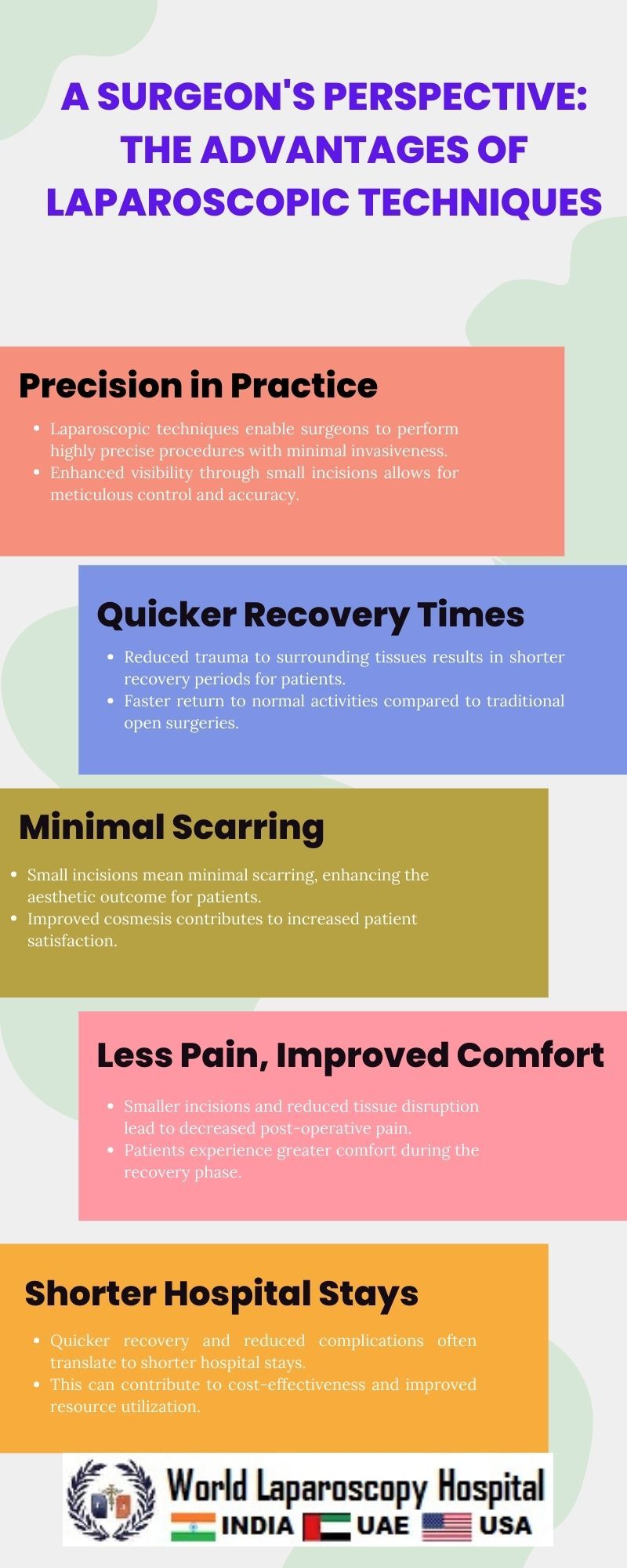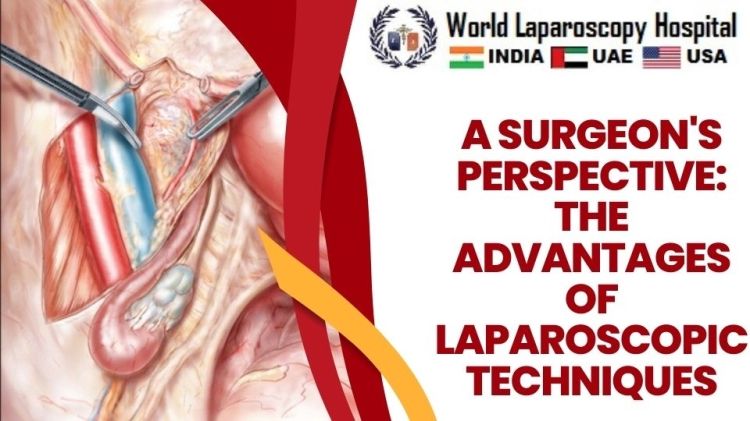A Surgeon's Perspective: The Advantages of Laparoscopic Techniques
Introduction:
In the ever-evolving landscape of surgical methodologies, laparoscopic techniques have emerged as a transformative force, offering a myriad of advantages from the standpoint of the operating surgeon. This article delves into the intricacies of laparoscopy, examining the profound impact it has on surgical procedures and patient outcomes.

Evolution of Laparoscopic Surgery:
To comprehend the advantages of laparoscopic techniques, it is imperative to trace the evolution of this surgical approach. Initially introduced in the late 20th century as a minimally invasive alternative to traditional open surgery, laparoscopy has witnessed remarkable advancements in instrumentation, imaging technology, and procedural refinements. From its humble beginnings, laparoscopy has grown into a versatile and widely adopted methodology across various medical specialties.
Smaller Incisions, Reduced Scarring, and Quicker Recovery:
One of the paramount advantages of laparoscopic surgery lies in the size of the incisions. Unlike traditional open surgeries that necessitate large cuts, laparoscopic procedures involve tiny incisions through which specialized instruments and a camera are inserted. The result is reduced trauma to the patient's body, leading to minimal scarring and a faster postoperative recovery. Surgeons appreciate the cosmetic benefits for patients and the reduced risk of postoperative complications associated with smaller wounds.
Enhanced Visualization and Precision:
The integration of advanced camera systems in laparoscopic procedures provides surgeons with unparalleled visualization of the operative field. High-definition imaging allows for magnified views of anatomical structures, enabling precise navigation through intricate surgical spaces. Surgeons can explore the depths of the body with clarity, identifying structures and anomalies that might be challenging to discern in open surgery. This heightened visualization contributes to greater accuracy in performing surgical maneuvers.
Increased Dexterity and Control:
Laparoscopic instruments are designed to replicate the movements of a surgeon's hand with enhanced articulation. This feature grants surgeons a level of dexterity and control that is often superior to traditional open surgery. The ability to manipulate instruments with finesse is particularly crucial in delicate procedures, such as those involving intricate vascular or neurological structures. Surgeons appreciate the ergonomic advantages of laparoscopic tools, which reduce fatigue during prolonged surgeries.
Minimized Blood Loss and Lower Infection Rates:
The minimally invasive nature of laparoscopic surgery translates into reduced blood loss during procedures. The precision afforded by the enhanced visualization and dexterity contributes to meticulous hemostasis, minimizing the need for blood transfusions. Additionally, the smaller incisions decrease the risk of postoperative infections, as there is less exposed tissue susceptible to bacterial contamination. These factors collectively enhance patient safety and contribute to a more favorable recovery experience.
Shorter Hospital Stays and Faster Return to Normal Activities:
Patients undergoing laparoscopic procedures often experience shorter hospital stays compared to those undergoing traditional open surgery. The quicker recovery time is attributed to the reduced trauma to surrounding tissues, minimized postoperative pain, and diminished risk of complications. Additionally, the smaller incisions reduce the likelihood of hernias, a common concern with large incisions. Patients appreciate the ability to resume normal activities sooner, promoting overall quality of life.
Widening Applications Across Specialties:
Originally developed for gynecological procedures, laparoscopic techniques have transcended their initial scope and are now applied across a diverse range of medical specialties. From gastrointestinal and urological surgeries to orthopedic and cardiothoracic interventions, laparoscopy has become a versatile tool in the hands of surgeons. Its adaptability and efficacy contribute to its widespread adoption in various medical disciplines.
Challenges and Considerations:
While the advantages of laparoscopic techniques are substantial, it is crucial to acknowledge the challenges associated with this approach. Surgeons must navigate a learning curve to master laparoscopic skills, and certain procedures may require specialized training. Additionally, the initial setup costs for laparoscopic equipment can be considerable. However, the long-term benefits in terms of patient outcomes and operational efficiency often outweigh these challenges.
Future Perspectives and Technological Innovations:
The future of laparoscopic surgery holds exciting prospects with ongoing technological innovations. Robotics-assisted laparoscopy is gaining prominence, offering even greater precision and control. Artificial intelligence algorithms are being developed to assist surgeons in decision-making during procedures. As technology continues to advance, the synergy between human expertise and cutting-edge tools promises to redefine the boundaries of what is achievable in the realm of laparoscopic surgery.
Conclusion:
Laparoscopic techniques have undeniably revolutionized the field of surgery, providing surgeons with a powerful set of tools that enhance precision, reduce invasiveness, and expedite patient recovery. From the evolution of laparoscopy to its current applications across diverse specialties, the advantages are far-reaching. As technological innovations continue to shape the landscape of surgical practices, the future holds the promise of further refining and expanding the capabilities of laparoscopic techniques, ultimately benefiting both surgeons and their patients.






